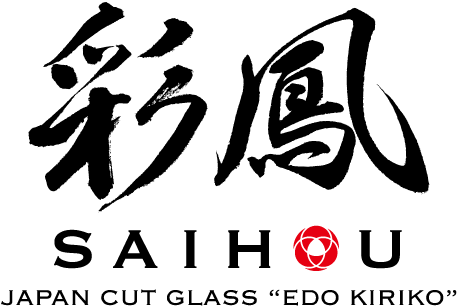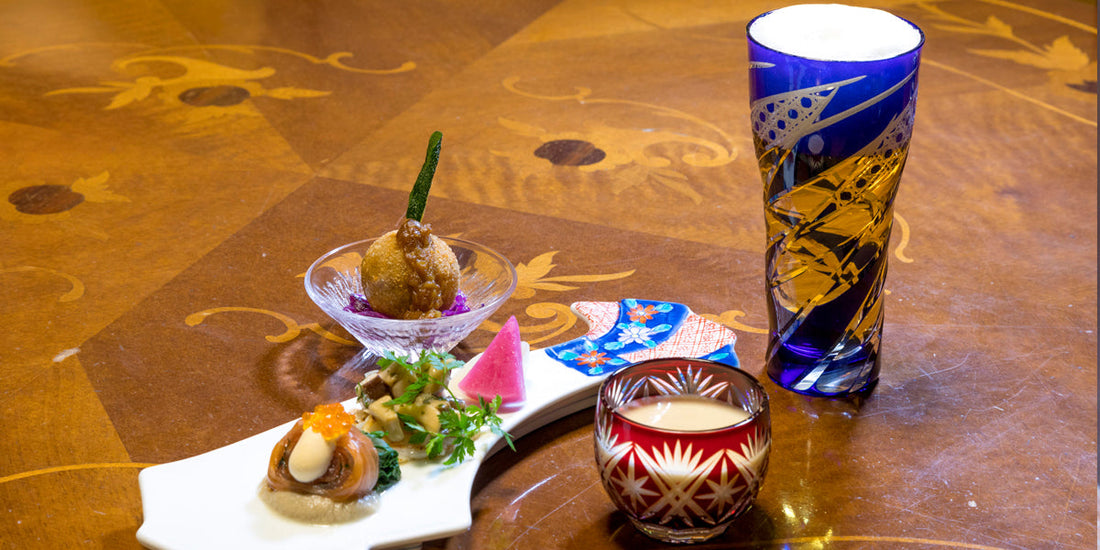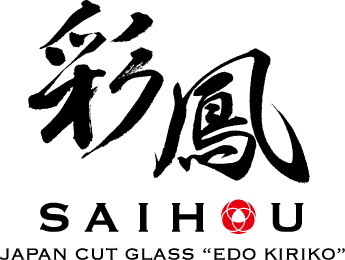The high level of Edo Kiriko craftsmanship creates beautiful pieces

Edo Kiriko is a traditional Japanese craft made from glass that is popular both in Japan and overseas. This time, we will introduce the history and appeal of Edo Kiriko.
・How Edo Kiriko was born in Japan
The history of Edo Kiriko dates back to the Edo period, and is said to have begun in 1834 when Kagaya Kyubei began carving glass. The name "Edo Kiriko" was given to the product after the war, and during the Edo period it was called "Giyaman" or "Kiriko." In the Netherlands, there is a glass product called "Giyaman," which refers to diamond, and this name is the same. "Kiriko" also refers to "processing glass" at the time.
・Development process of cutting techniques
During the Meiji period, the government began to put effort into industrial glass products. First, they invited Emanuel Hauptman, who had cutting techniques, from the UK, to teach Japanese people. This established the glass processing techniques used to make Edo Kiriko today. Wheels began to be used for the work, and it was around this time that more and more glass was changed from clear to colored. With the glass cutting techniques established, they succeeded in bringing out the charm of Edo Kiriko even more.
During the post-war reconstruction period of the Showa era, processing techniques improved, and in the Heisei era, it was designated as a traditional craft of Japan. Now in the Reiwa era, many Edo Kiriko pieces are being produced. It is not only popular in Japan, but is also a noteworthy craft that is highly valued as a souvenir or gift overseas. This is the history of "Edo Kiriko."
What are the characteristics of Edo Kiriko? The production process and the appeal of handcrafted craftsmanship

Edo Kiriko glass has a unique feature that sets it apart from mass-produced glassware: each piece is handcrafted by skilled artisans.
The production process involves the following steps:
- "allocation"
- "Rough grinding"
- "Middle print"
- "Stone hanging"
- "Polishing"
Each step requires a high level of skill and experience. In the "allocation" step, lines must be drawn without misalignment, while the "intermediate polishing" step tests the craftsman's skill in precise polishing. When polishing, the size of the diamond particles used for polishing must be adjusted to suit the "coarse polishing" and "intermediate polishing" stages. After "polishing," there is "buffing," where the entire glass is further polished using polishing powder to create a finished product. This process removes even the smallest blurring and produces a beautiful luster. Through this series of processes, a unique pattern that can only be reproduced in Edo Kiriko is created.
All of the above processes are carried out by hand, resulting in the delicate patterns that only a craftsman can create. This is the unique feature of Edo Kiriko that captivates people. It is only by the hands of a craftsman that history and advanced techniques can be combined to create beautiful pieces.
Glass workshop "Saiho" where highly skilled craftsmen gather

Saiho employs many highly skilled artisans. For example, traditional craftsman Kei Hosokoji is one of those who explores new possibilities for Edo Kiriko and creates works for the world. He has won numerous awards at numerous exhibitions and is one of the few artisans to be certified as a "traditional craftsman" in Japan. There are three other artisans certified as traditional craftsmen at Saiho, including him. Many other young staff members also support the workshop. They are passing on their skills to young artisans in order to train successors. Specifically, they are passing on traditional patterns and Kiriko processing techniques that have been passed down since the Edo period.
・From tradition to new challenges
In crafting patterns that have been around since the Edo period, it is important to preserve tradition. However, Saiho's artisans have not forgotten to experiment with new patterns. They have created a new image of the "checkered pattern," a widely known Edo Kiriko pattern. In terms of color variations, they are not limited to the classic red and blue, but use glass materials in a wide variety of colors. By combining colors, they enhance the appeal of traditional patterns.
Three Beautiful Edo Kiriko Products
Saiho is full of beautifully designed products. Here we will introduce three of their most beautiful products.
・M-086-B Sword and Diamond Star Pattern Sake Cup, Blue
This product is a sake cup featuring the traditional "Kenbishi Star Motif" design on the surface, combining three types of designs: "Kenbishi," "Bamboo Leaf," and "Star Motif." It is imbued with the meaning of "praying for a long life full of vitality and good health." Made from soda glass, it can be used as glass tea set for formal tea ceremonies. It also makes a wonderful gift or keepsake for weddings and births.
・M-266 Yarai Hoshi Double Pattern Old
This product features a traditional "Yarai" pattern, often used in architecture and kimonos, with a star inside. The crystal glass diffuses light, matching the brightness of the exterior. Changing the color of the glass changes the overall impression, making it a decorative piece even when not in use. It's best used as a rocks glass, allowing you to enjoy the design while sipping on your drink.
・M-7528-BP Diamond and Scale Pattern Open Top Tumbler, Blue Pink
This product features an original "Rishi-rinko" (diamond scale) design, a modern take on the famous Kamakura Hojo clan crest. Made from soda glass, it features subtle differences in appearance, such as different colors at the top and bottom, allowing you to choose the perfect gift. It can also be used as a personal tumbler for pouring alcohol or everyday beverages.
As mentioned above, the reason why Edo Kiriko is the perfect gift is because of the designs and decorations that the recipient will enjoy. Saiho is particularly particular about the glass material, allowing you to enjoy a variety of traditional patterns. Another appeal of these three products is that they do not deteriorate over time, allowing you to enjoy these valuable crafts for a long time.





